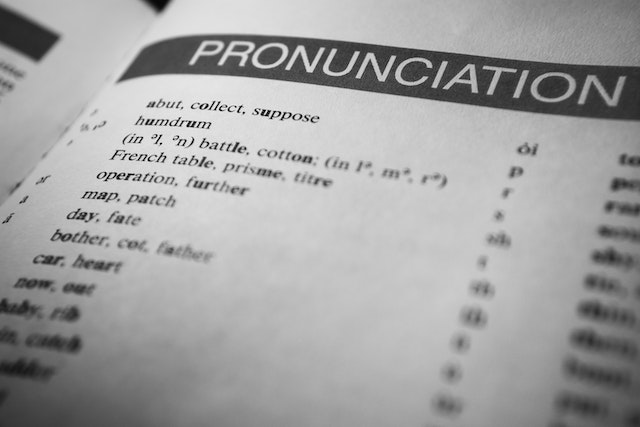Written by: Olivera Tolimir
Dear Sir/Madam,
Since you showed interest in writing e-mails in Serbian, we’re pleased to announce you that you don’t need numerous Serbian classes. Online communication through e-mails is something you can master in just one blog post! (This blog post, precisely.)
Please, continue reading to learn appropriate phrases for both formal and informal Serbian e-mails.
Kind regards,
BLS

E-Mail Etiquette
Proper e-mail etiquette doesn’t differ much from language to language. As you probably know, you need a subject line, greeting, opening, body, closing, signature, and (optionally) attachment.
If you’re new in business and haven’t sent many e-mails yet, check out the basic rules here.
#1 Subject Line
There isn’t much philosophy about the subject line in Serbian emails. Like in any other language, it should provide a summary of the email’s content.
It shouldn’t be too long, but it should accurately represent the intention behind your email.
For example:
- Prijava za posao profesora engleskog jezika (Job Application for English Language Teacher Position )
- Poziv na sastanak (Meeting Invitation)
- Žalba u vezi sa kupljenim frižiderom (Formal Complaint Regarding Purchased Fridge)
#2 Greetings
A greeting is a significant part of an e-mail. It has to be appropriate. That said, there is an e-mail etiquette in Serbian concerning these rules.
Formal Greetings
In the previous paragraph, you saw three subject lines. Since they’re directed to the future employee, a coworker, or a store, we can conclude they’re all written for a formal Serbian e-mail.
For the mentioned subject lines, a suitable greeting would be Poštovani. It means Respected, but it can be translated as Sir. If you’re writing to a woman, you can write, Poštovana.
Sometimes, you’re unsure who exactly you’re communicating with. In that case, the first option is appropriate (Poštovani). That could be the case in the third mentioned subject line, where you’re writing to a store and don’t know who exactly will answer you.
If you know the name of a person you’re communicating with, you can add it after the word Poštovani. For example, Poštovani Davide (Dear David), or Poštovana Marija (Dear Marija). It’s suitable for your coworkers and collaborators. It’s also appropriate for your boss if you call each other by name.

When you need to be extra formal (for example, when applying for a new corporate job), you should write the title and last name after the word Poštovani. For example, Poštovani gospodine Markoviću (Dear Mr. Markovic), or Poštovana gospođo Petrović (Dear Mrs. Petrovic).
Bear in mind that you need to use Vocative in Serbian greetings. It’s a grammatical case we use when addressing someone. If you’re unsure about Serbian grammatical cases, check out some Serbian classes. Online Serbian courses are great to learn and practice the Serbian grammar.
Also, remember that we decline only male last names. So, when addressing Mr. Markovic, we say, gospodine Markoviću. But when addressing Mrs. Petrovic, we say, gospođo Petrović. The bold parts are Vocative markers. You can see that her title changed form, but her last name stayed the same.
Formal – Informal Greeting
There’s a greeting that can be both formal and informal. It’s Dragi / Draga. It translates as dear. So, if you start with Dragi Marko (Dear Marko), it’s formal enough for your coworker and appropriate for your friend.
Informal Greetings
If you’re writing an email to a friend, family member, or a close coworker, it’s perfectly fine to write only, Zdravo! or Ćao! (Hello / Hi).
So, to sum up, these are the usual e-mail greetings in Serbian:
- Poštovani,
- Poštovani (+ name),
- Poštovani (+ title + last name),
- Dragi (+ name),
- Ćao! / Zdravo!
#3 Watch for the Pronouns!
The pronouns are crucial. As you know, we have a formal and informal way of communicating in Serbian. For friends, family, and people our age and younger, we use the second person singular (ti – you, tvoj – your). With older people and coworkers, we use the second person plural (Vi – you, Vaš – your).
So, an example of an opening sentence in your informal e-mail could be:
- Pišem ti u vezi s tvojim predlogom da otputujemo u Rim. (I’m writing you about your preposition to travel to Rome together.)
An example of an opening sentence in a formal e-mail could be:
- Pišem Vam u vezi s popravkom Vašeg računara. (I’m writing you about the repair of your computer.)
#4 Closing

Your closing line directly depends on the type and formality of your e-mail. Here are some useful examples of Serbian closing lines:
- Hvala unapred! (Thank you in advance!)
- Nadam se Vašem potvrdnom odgovoru! (I hope for your affirmative response!)
- Hvala na saradnji! (Thank you for your cooperation!)
- Hvala na strpljenju! (Thank you for your patience!)
These were optional closing lines before the final goodbye. At the end of every Serbian email, right before your name and last name, there has to be one of the below lines. We’ll start from the most informal and build up to the most formal sentence.
- Čujemo se! (See you!)
- Čuti means to hear in Serbian, but it can’t be directly translated.
- Pozdrav! (Goodbye!)
- Srdačan pozdrav, (Kind regards)
- S poštovanjem, (With respect)
#5 Attachment
The crucial attachment rule: don’t forget to attach it! Here’s a sentence we use to inform our recipient about the additional document(s):
- U prilogu dostavljam _____________________.
#6 Examples of Useful Lines
Here are some extra useful lines we use in emails:
- Javljam se povodom ________________ (+ Genitive) / Javljam se u vezi sa __________________ (+ Instrumental). (I’m writing you about…)
- Imam zadovoljstvo da Vas obavestim _______________________. (I have a pleasure to inform you __________________).
- Nažalost, moram da Vas obavestim _____________________. (Unfortunately, I have to inform you ________________.)
- Da li biste mogli da mi pružite dodatne informacije o ______________ (+ Locative)? (Could you give me some additional information about ________________?)
- Molim Vas da mi odobrite ____________________. (I’m asking you to approve me __________________.)
- Hvala na razumevanju. (Thank you for understanding.)
- Molim Vas da me obavestite o daljim koracima. (Please, inform me about the future steps.)
- Molim Vas da me obavestite o eventualnim izmenama. (Please, inform me about the possible changes.)
- Radujem se našoj budućoj saradnji. (I’m looking forward to our future cooperation.)
If you still think you need guidance through Serbian classes online to help you master writing e-mails in Serbian, choose one of our great Serbian teachers and book your individual Serbian lesson!



